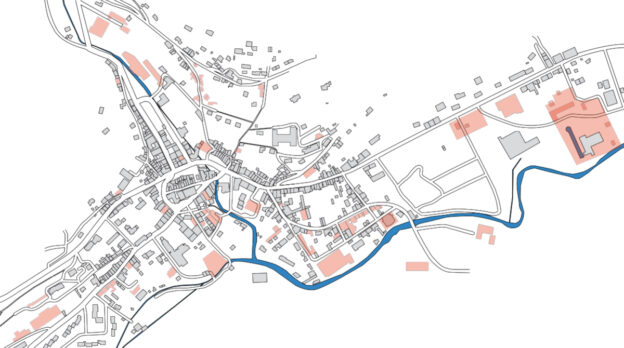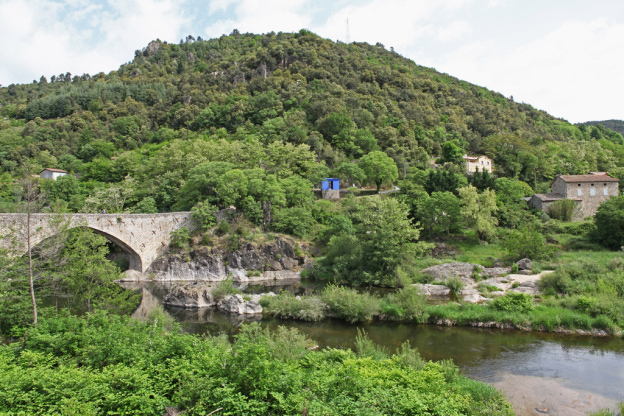Situated in the Pilat Regional Nature Park near Saint-Etienne, the town of Bourg-Argental has retained the imprint of a textile activity developed there since the 16th century. Everything needed for textile production was in evidence – milling, warping, weaving, braiding, ribbon making; buildings linked to the industry made a strong mark on the landscape.
The project, initiated by the town of Bourg-Argental, is part of the Industrial Landscape programme unfolding in the four regional nature parks of Pilat, Monts-d’Ardèche, Lorraine and Vercors. Residents and elected officials wished to highlight the industrial past and make the conscious and unconscious traces of the textile industry legible. It is a question of addressing spaces created by the destruction of certain buildings in line with architecture still in existence.
Élisabeth Ballet initially conducted a meticulous investigation to collect data on weaving and ribbon making, but also to reread, spatially, Bourg-Argental’s industrial history. The places she identified could not be used (either inaccessible or decreed flooded, by the state), so in 2013, the commune invited her to invest in a central space that was the former site of the Jarrosson textile factory.
Élisabeth Ballet’s work takes shape in this space and goes beyond, including a trail that retraces the town’s textile activity, as well as a book.
- Jarrosson Square: finding a purpose.
The first thing to do is to clear the original factory space by removing everything that obstructs the square, and reveal the original gate and surrounding wall at the bottom of the garden. “Then the square will turn into a pedestrian agora, the garden part raised like a stage, opens onto the town and is visible to everyone.”
On the ground, granite paving will depict weaving in motion across its entire length, then continue past the route nationale, to suggest that weaving gave work to the whole town with some fifty factories and studios dedicated to textile.
- The trail through the town.
With the help of Mr. Michel Linossier, former weaving combs manufacturer, Élisabeth Ballet located a large section of the missing workshops street by street, and drew a map to guide the visitor on his/ her journey through the town. An enamelled sign serves as a landmark at each site.
- The Book
Because a physical artwork cannot reveal the work of research, Élisabeth Ballet wanted to produce a book to restore the profile of weaving spaces. “It will be divided into one part for drawing, another for the archives and interviews. I have collected instruction books, sample books and more technical archives on the practice of weaving….My objective is to show, through the progressions of words, a changing profession, through images, which is emblematic of places and practices in a factory that was witness.”
Patrons: The commune of Bourg-Argental, represented by mayor Stéphane Heyraud and deputy mayors.
Funding: Pilat Regional Nature Park, within the European LEADER programme (European Agricultural Fund for Rural Development), Fondation de France /New Patrons, the town of Bourg-Argental
In Progress
















